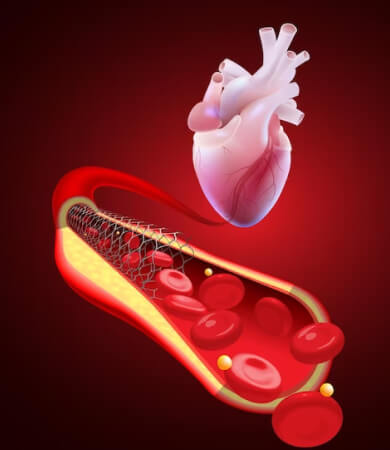
Angioplasty
An angioplasty is a common medical procedure to open a clogged artery, protect your heart, and improve blood flow. At Sam Houston Heart and Vascular in Houston and Spring, Texas, Bashir Al Kaddoumi, MD, FACC, FSCAI, has years of experience performing angioplasty procedures. If you have a blockage in an artery that reduces blood flow or puts you at risk of a heart attack, you may need an angioplasty. Call the office nearest you or schedule a consultation online today.
What is an angioplasty?
A coronary angioplasty is a procedure performed to open clogged heart arteries. A coronary angioplasty involves temporarily inserting and inflating a tiny balloon in the clogged artery to help widen the artery.
A small wire mesh tube called a stent is often permanently placed in combination with angioplasty to help prop your artery open and reduce the chance of your artery narrowing again. Some stents are coated with a medication that also helps to keep your artery open.
Angioplasty is a less invasive method of opening clogged arteries compared to bypass surgery, which involves an incision in the chest.
Why would I need an angioplasty?
Dr. Al Kaddoumi might recommend an angioplasty to improve symptoms of blocked arteries, such as shortness of breath and chest pain. It can also help manage certain heart conditions and protect your heart health.
During a heart attack, an angioplasty can also be used to quickly open up a blocked artery and decrease the damage to your heart.
Angioplasty is commonly used to treat atherosclerosis. Atherosclerosis is a type of heart disease involving the gradual buildup of fatty plaques in your heart’s blood vessels.
Dr. Al Kaddoumi can help you decide if angioplasty is right for you. If you have diabetes or you have multiple blockages, he might recommend a different procedure or treatment.
What happens during angioplasty?
Angioplasty involves making a small incision in the skin over a blood vessel in your arm, wrist, or most commonly in the groin area (femoral artery). Dr. Al Kaddoumi threads a small, thin tube (catheter) through the incision to perform the procedure.
Dr. Al Kaddoumi inserts a small amount of dye through the catheter to view the blockage on special X-ray images called angiograms. He inflates a small balloon at the end of the catheter and widens the blocked artery before deflating and removing the balloon.
In some cases, the balloon might need to be inflated and deflated several times to stretch the artery a bit more every time. A permanent stent might be placed to prop open your artery.
An angioplasty can take several hours depending on the number of blockages, the difficulty, and other factors. General anesthesia isn’t typically needed, and you’ll be sedated but awake during your procedure.
If you have several blockages, Dr. Al Kaddoumi might recommend repeating the procedure for each blockage.
Find out more about angioplasty by calling Sam Houston Heart and Vascular or booking online today.


